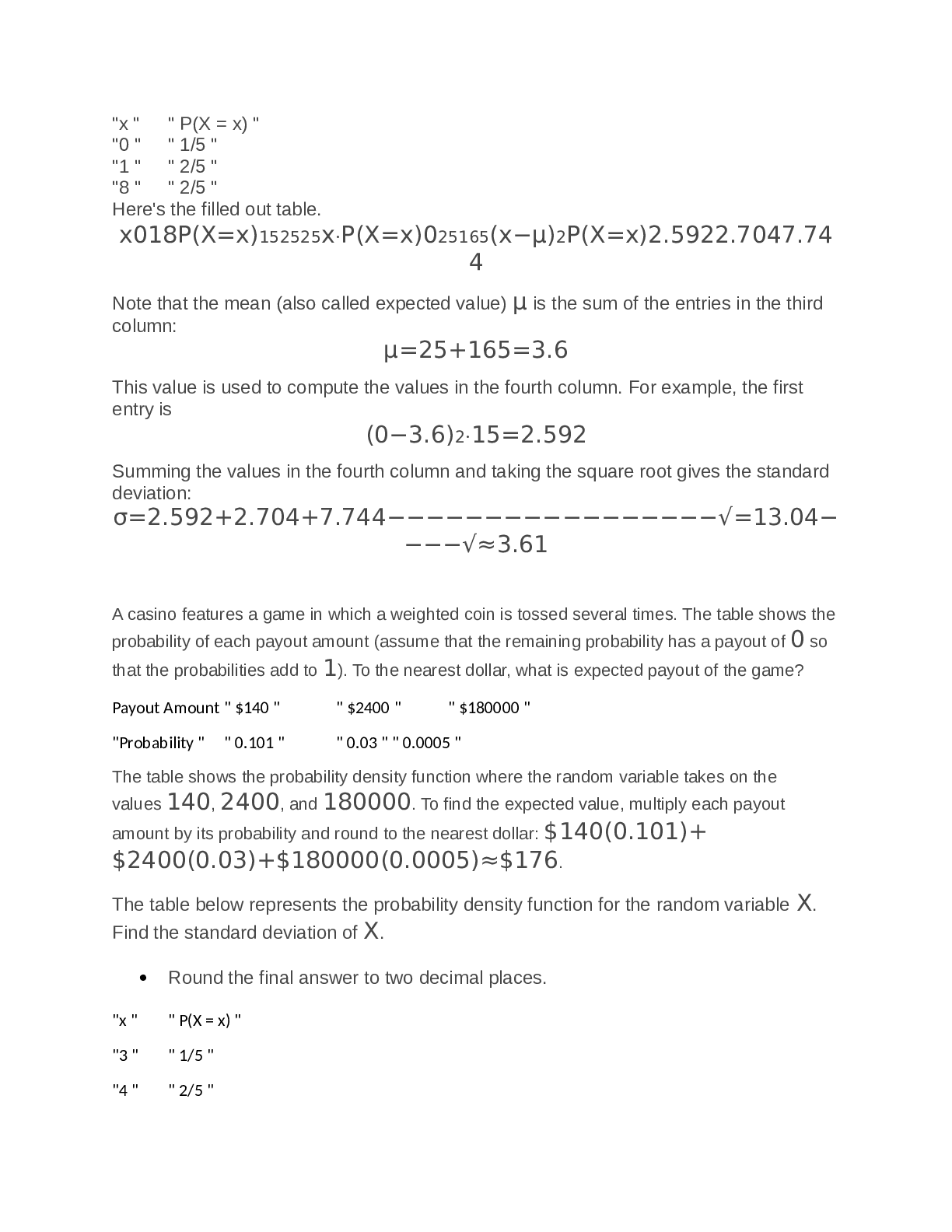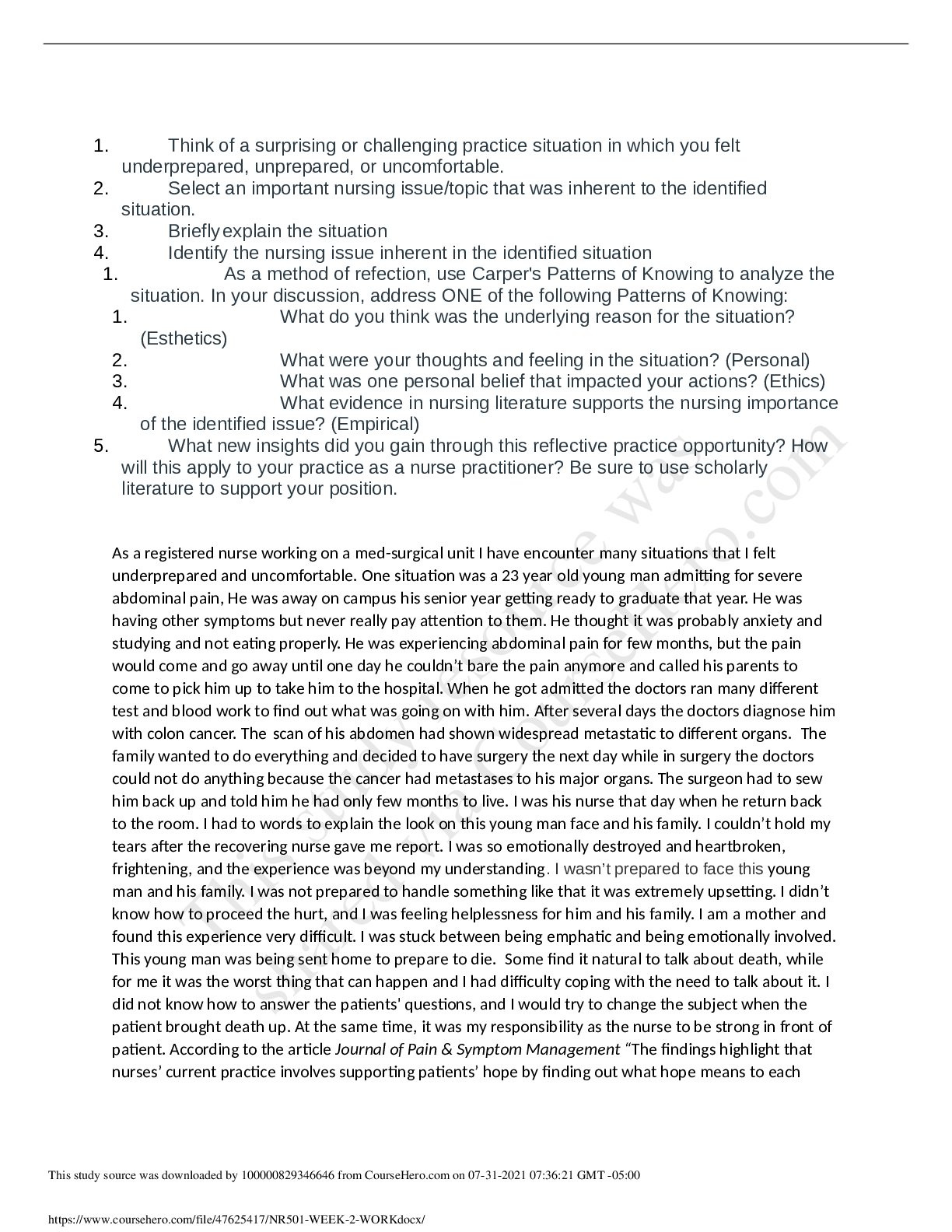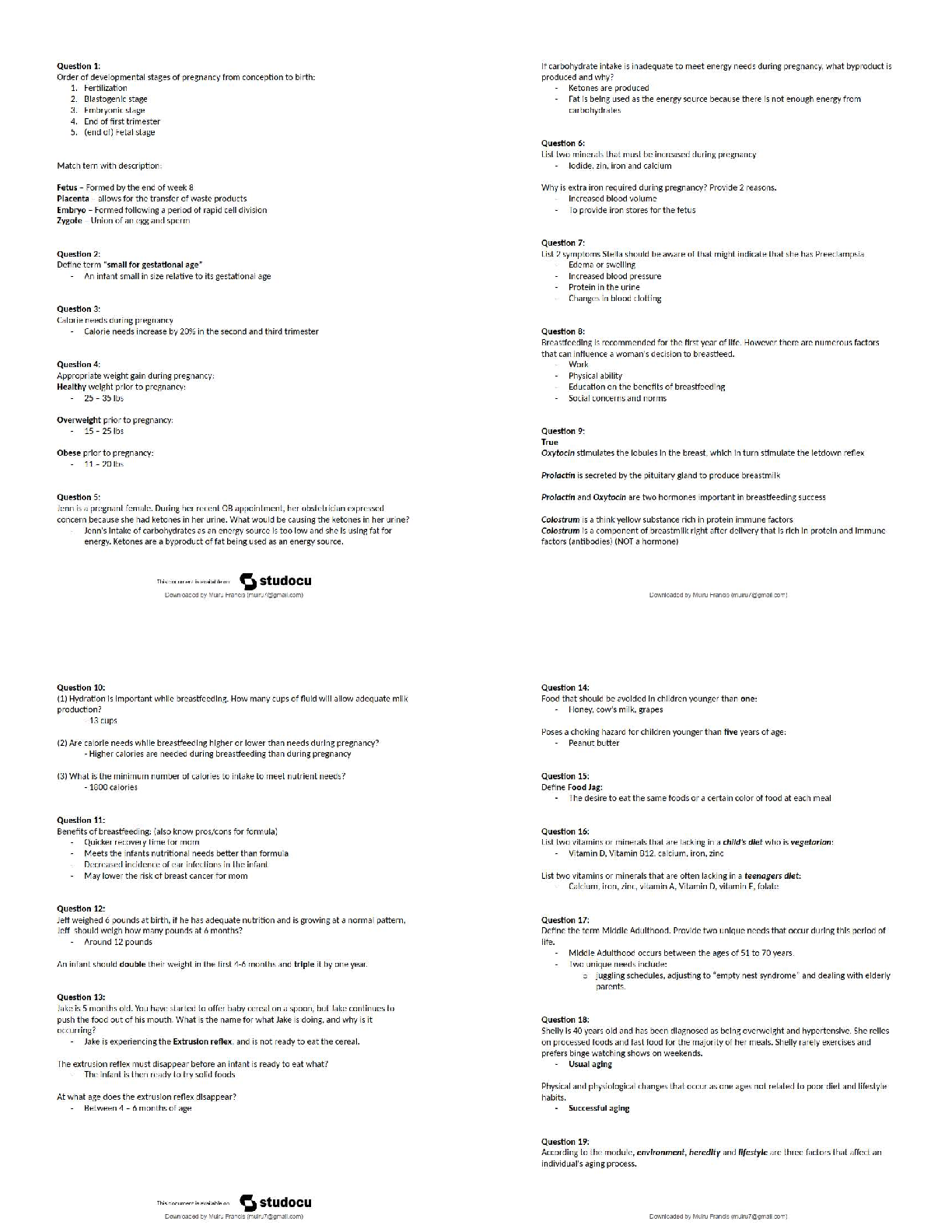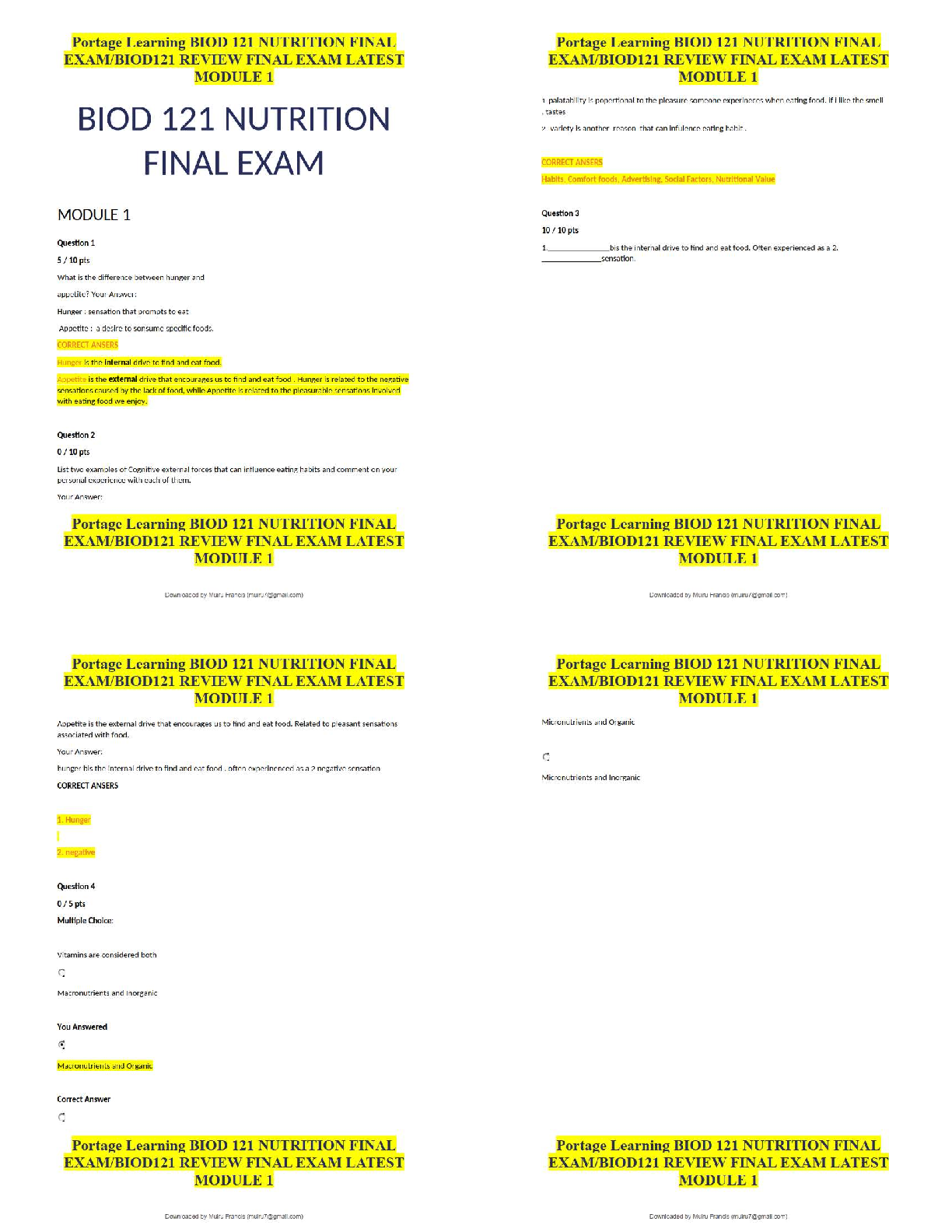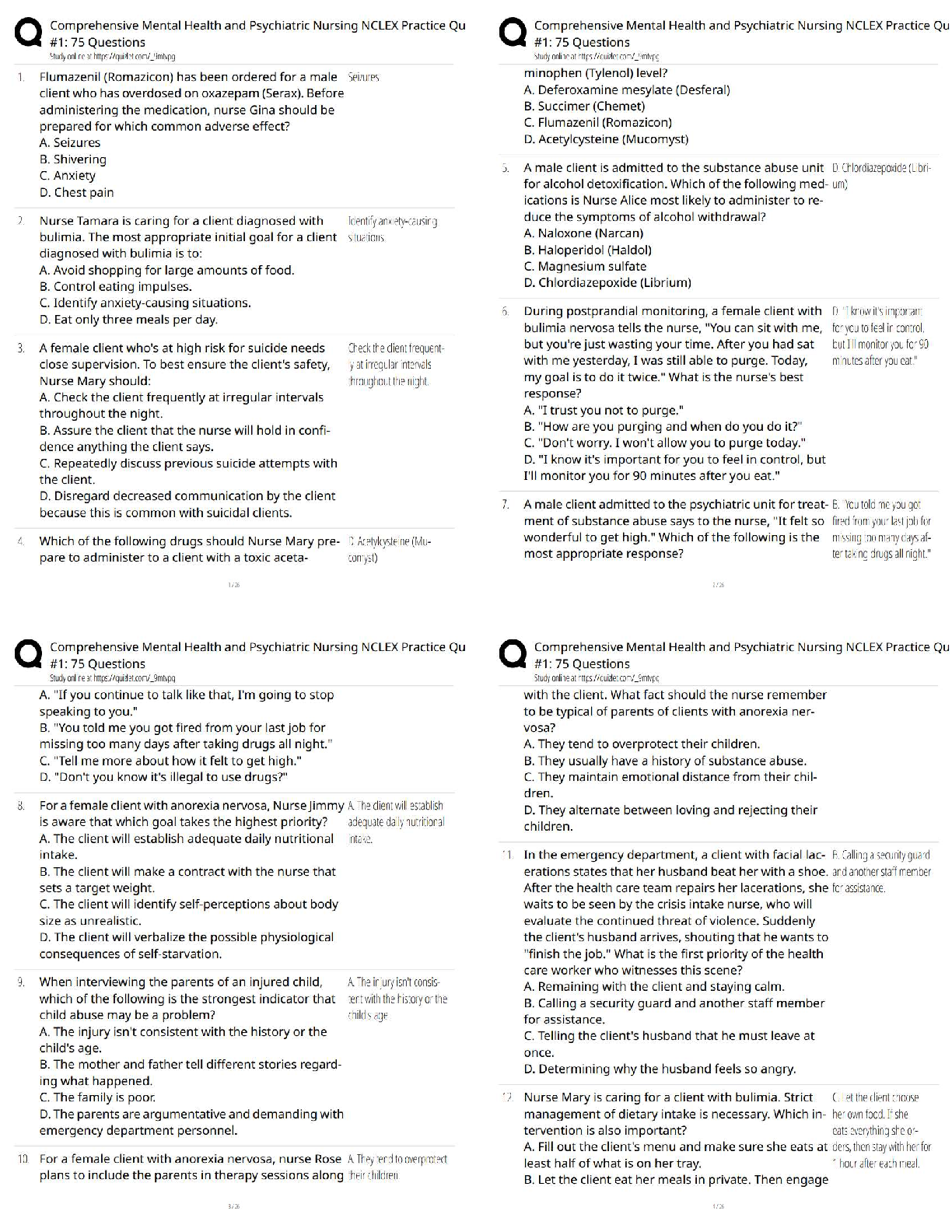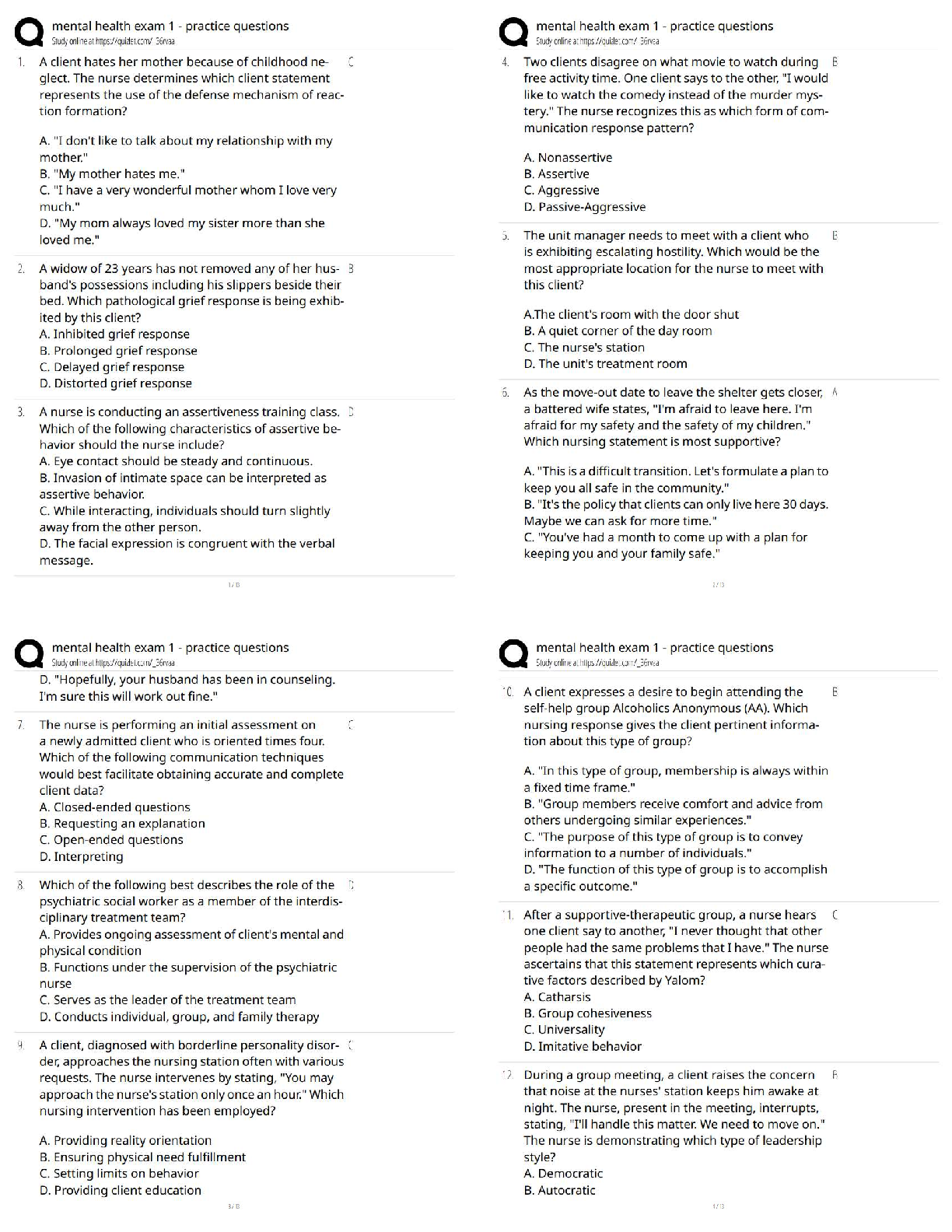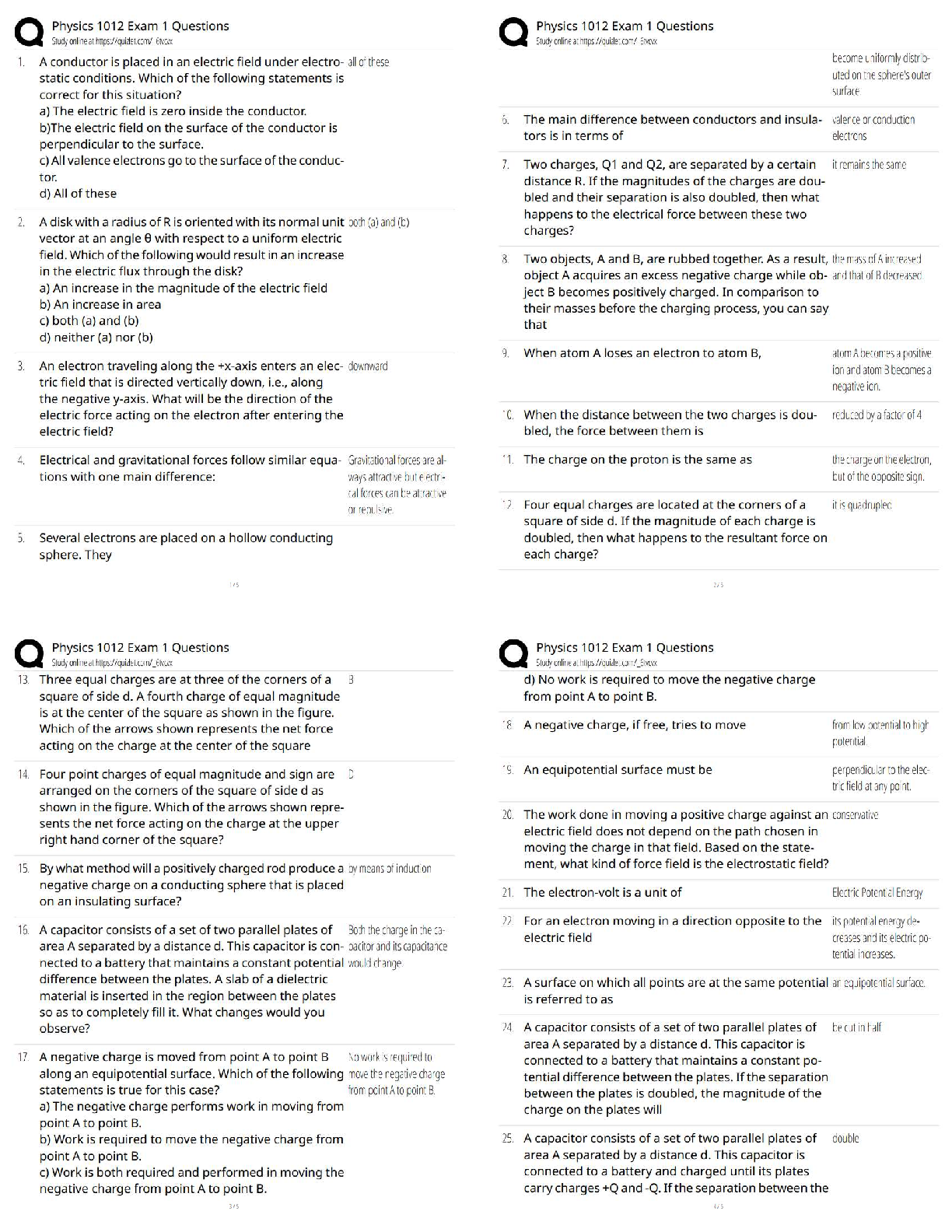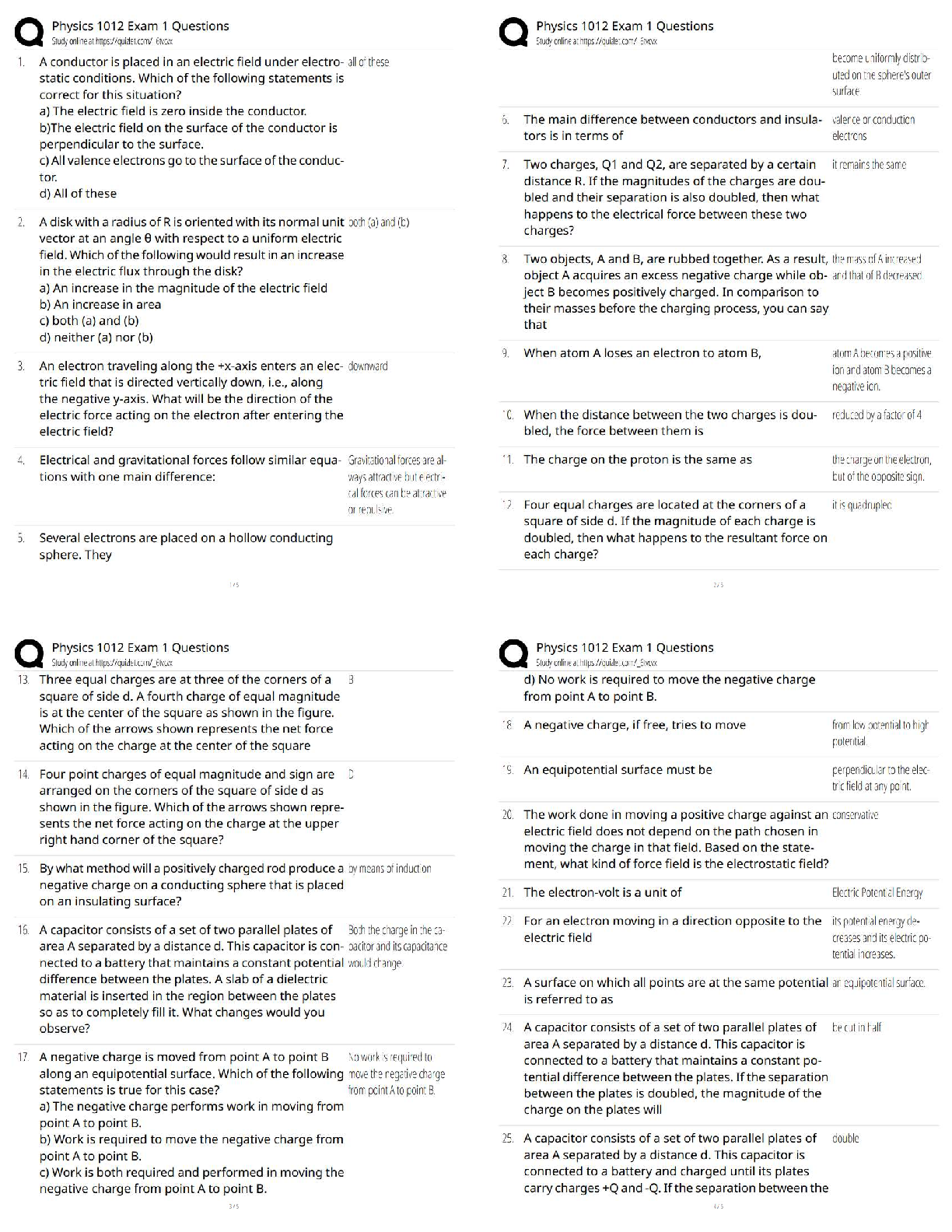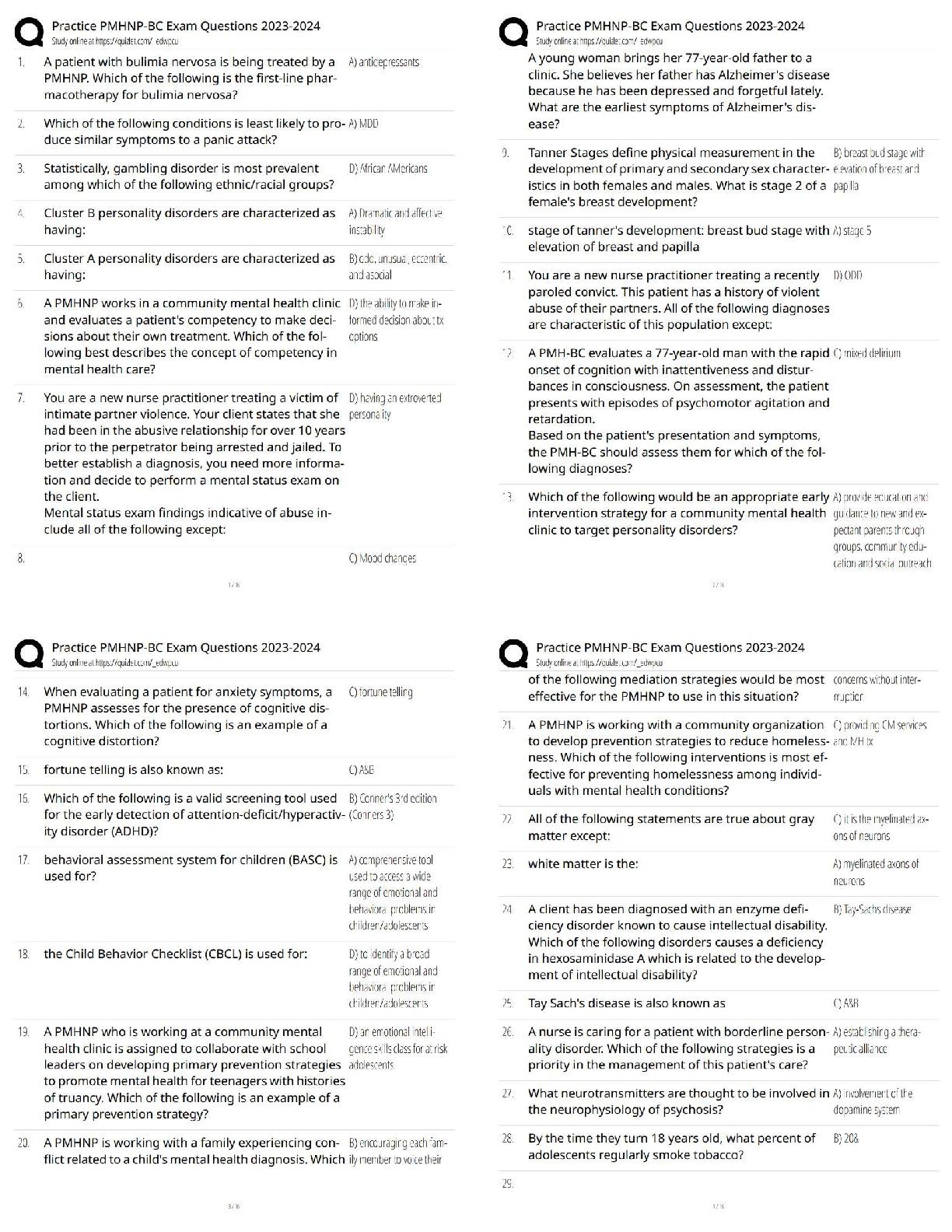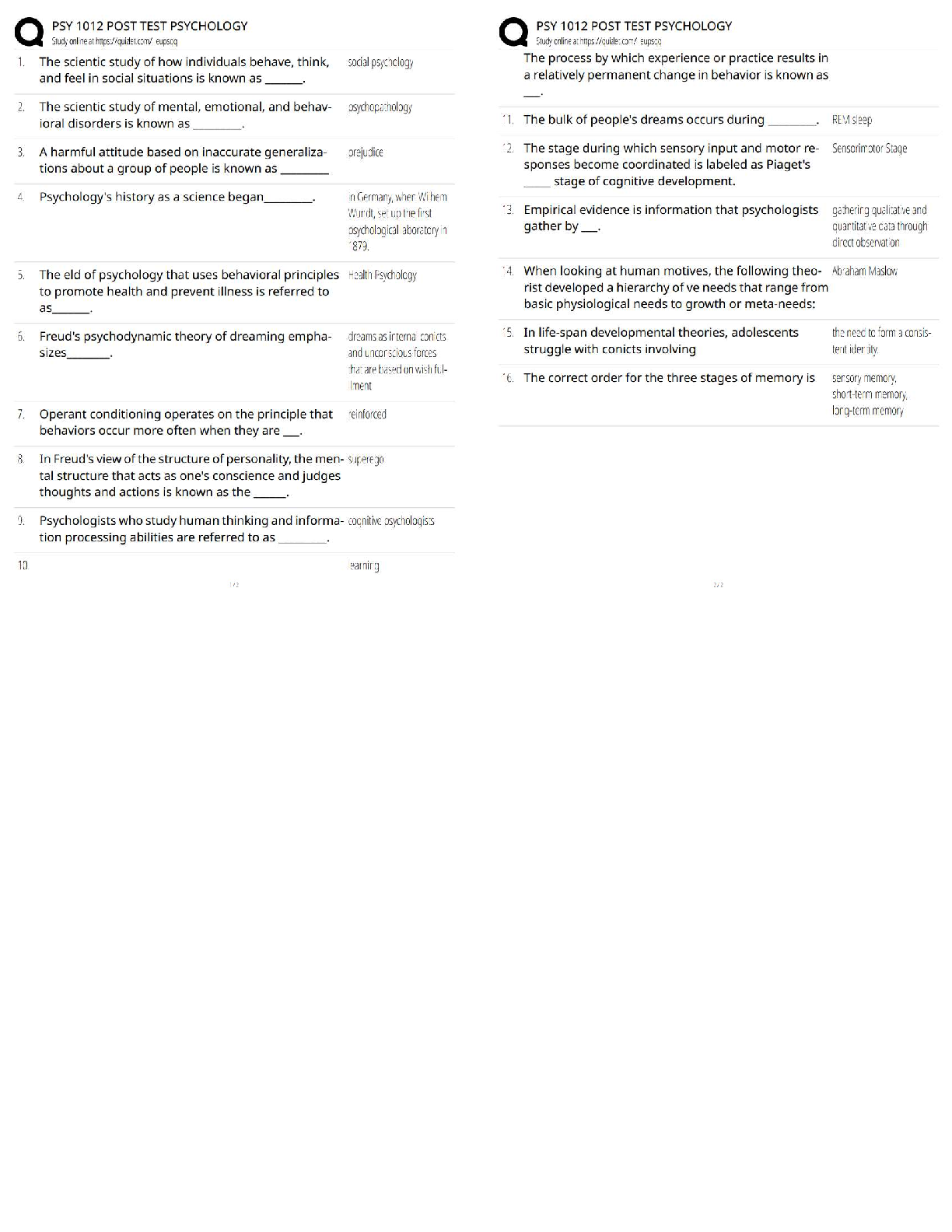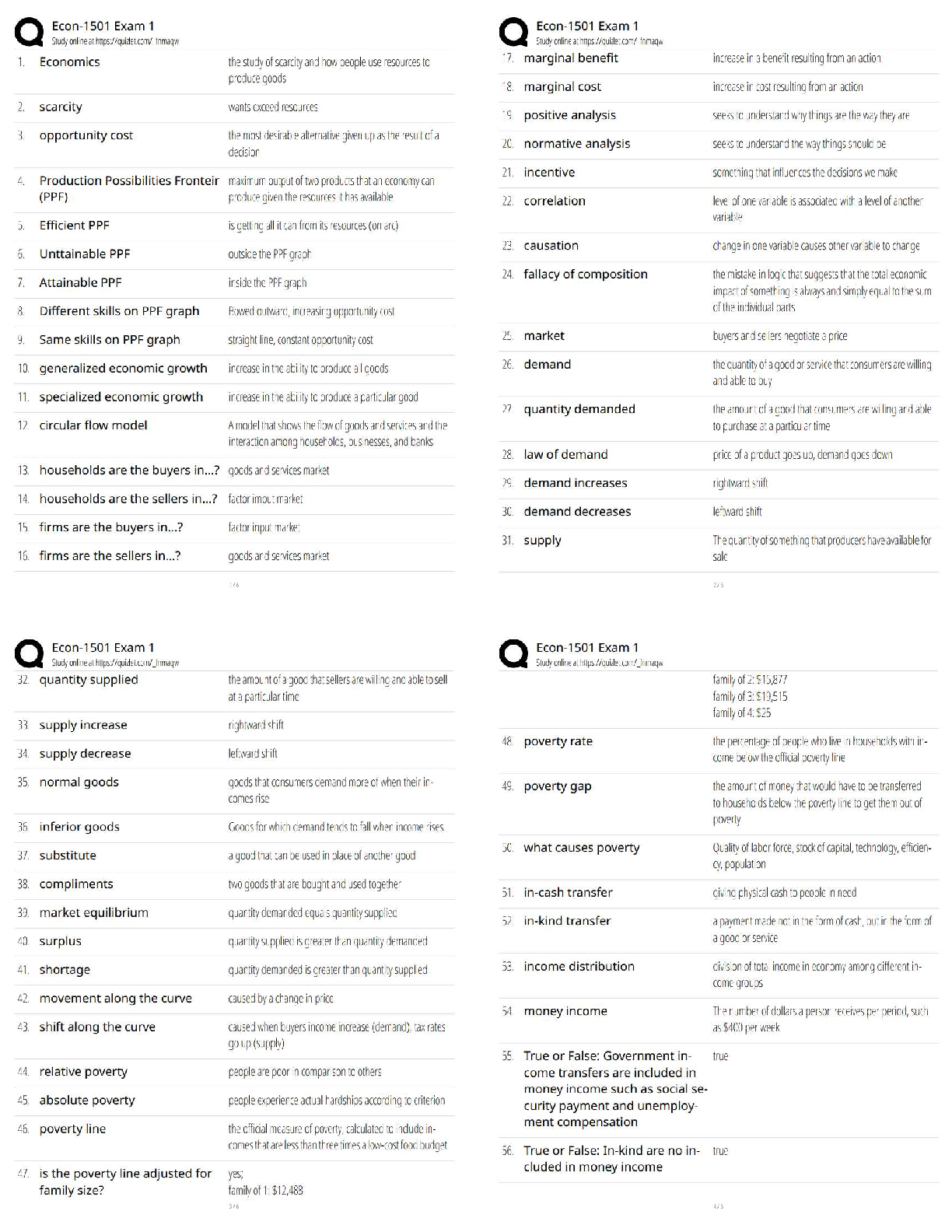*NURSING > QUESTIONS & ANSWERS > Chamberlain College of Nursing - NURSING 326MentalStudyTest1. (All)
Chamberlain College of Nursing - NURSING 326MentalStudyTest1.
Document Content and Description Below
Chapter 2. Mental Health/Mental Illness: Historical and Theoretical Concepts Summary and Key Points ▀ Psychiatric care has its roots in ancient times, when etiology was based in superstition and ... ideas related to the supernatural. ▀ Treatments were often inhumane and included brutal beatings, starvation, or other torturous means. ▀ Hippocrates associated insanity and mental illness with an irregularity in the interaction of the four body fluids (humors)—blood, black bile, yellow bile, and phlegm. ▀ Conditions for care of the mentally ill have improved, largely because of the influence of leaders such as Benjamin Rush, Dorothea Dix, and Linda Richards, whose endeavors provided a model for more humanistic treatment. ▀ Maslow identified a “hierarchy of needs” that individuals seek to fulfill on their quest to selfactualization (one's highest potential). For purposes of this text, the definition of mental health is viewed as “the successful adaptation to stressors from ▀ the internal or external environment, evidenced by thoughts, feelings, and behaviors that are ageappropriate and congruent with local and cultural norms.” ▀ In determining mental illness, individuals are influenced by incomprehensibility of the behavior; that is, whether or not they are able to understand the motivation behind the behavior. ▀ Another consideration is cultural relativity. The “normality” of behavior is determined by cultural and societal norms. ▀ For purposes of this text, the definition of mental illness is viewed as “maladaptive responses to stressors from the internal or external environment, evidenced by thoughts, feelings, and behaviors that are incongruent with the local and cultural norms, and that interfere with the individual's social, occupational, and/or physical functioning.” ▀ Anxiety and grief have been described as two major, primary psychological response patterns to stress. ▀ Peplau defined anxiety by levels of symptom severity: mild, moderate, severe, and panic. ▀ Behaviors associated with levels of anxiety include coping mechanisms, ego defense mechanisms, psychophysiological responses, psychoneurotic responses, and psychotic responses. ▀ Grief is described as a response to loss of a valued entity. Loss is anything that is perceived as such by the individual. ▀ KüblerRoss, in extensive research with terminally ill patients, identified five stages of feelings and behaviors that individuals experience in response to a real, perceived, or anticipated loss: denial, anger, bargaining, depression, and acceptance. ▀ Anticipatory grief is grief work that is begun, and sometimes completed, before the loss occurs. ▀ Resolution is thought to occur when an individual is able to remember and accept both the positive and negative aspects associated with the lost entity. ▀ Grieving is thought to be maladaptive when the mourning process is prolonged, delayed or inhibited, or becomes distorted and exaggerated out of proportion to the situation. Pathological depression is considered to be a distorted reaction. Multiple Choice 1. A nurse is assessing a client who is experiencing occasional feelings of sadness because of the recent death of a beloved pet. The client’s appetite, sleep patterns, and daily routine have not changed. How should the nurse interpret the client’s behaviors? A. The client’s behaviors demonstrate mental illness in the form of depression. B. The client’s behaviors are extensive, which indicates the presence of mental illness. C. The client’s behaviors are not congruent with cultural norms. D. The client’s behaviors demonstrate no functional impairment, indicating no mental illness. 2. At what point should the nurse determine that a client is at risk for developing a mental disorder? A. When thoughts, feelings, and behaviors are not reflective of the DSM5 criteria B. When maladaptive responses to stress are coupled with interference in daily functioning C. When the client communicates significant distress D. When the client uses defense mechanisms as ego protection . 3. A nurse is assessing 15yearold identical twins who respond very differently to stress. One twin becomes anxious and irritable, while the other withdraws and cries. How should the nurse explain these different responses to stress to the parents? A. Reactions to stress are relative rather than absolute; individual responses to stress vary. B. It is abnormal for identical twins to react differently to similar stressors. C. Identical twins should share the same temperament and respond similarly to stress. D. Environmental influences weigh more heavily than genetic influences on reactions to stress. 4. A client has a history of excessive drinking, which has led to multiple arrests for driving under the influence (DUI). The client states, “I work hard to provide for my family. I don’t see why I can’t drink to relax.” The nurse recognizes the use of which defense mechanism? A. Projection B. Rationalization C. Regression D. Sublimation [Show More]
Last updated: 3 years ago
Preview 1 out of 137 pages
.png)
Buy this document to get the full access instantly
Instant Download Access after purchase
Buy NowInstant download
We Accept:

Reviews( 0 )
$10.00
Can't find what you want? Try our AI powered Search
Document information
Connected school, study & course
About the document
Uploaded On
Mar 12, 2021
Number of pages
137
Written in
All
Additional information
This document has been written for:
Uploaded
Mar 12, 2021
Downloads
0
Views
59

.png)


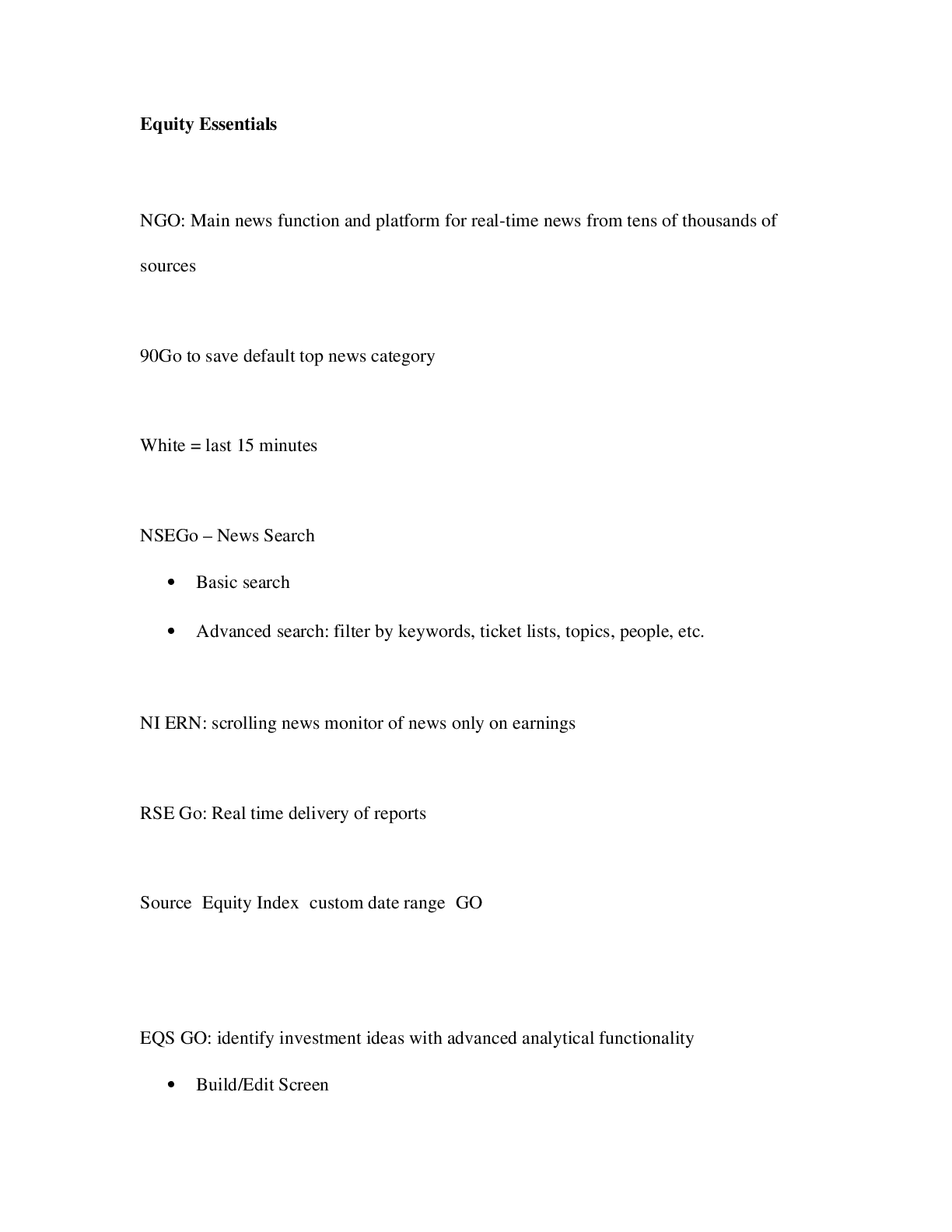


.png)
